
Publisher:
Bonnie King
CONTACT:
Newsroom@Salem-news.com
Advertising:
Adsales@Salem-news.com

~Truth~
~Justice~
~Peace~
TJP
Nov-30-2011 16:05

 TweetFollow @OregonNews
TweetFollow @OregonNews
Keeping Veterans' Claims Alive
Katrina J. Eagle and Douglas J. Rosinski for Salem-News.comImportant info for U.S. military vets.
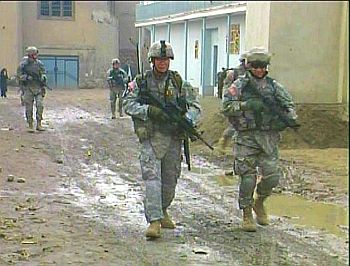 U.S. soldiers on patrol in Kabul, Afghanistan. Salem-News.com photo by Tim King |
(SAN DIEGO) - Veterans often wait years to receive government benefits. All claims to benefits used to end with the veteran’s death, but a new law allows family members to step in. It's an imperfect solution, so survivors will need a knowledgeable guide to help them navigate the claims process.
In 2010, more than 3 million veterans received monthly monetary benefits from the Department of Veterans Affairs (VA), including more than 1 million veterans each from the Vietnam War and Gulf War eras, as well as veterans who served as far back as World War II.1 Nearly 40 percent of the veterans receiving benefits are age 65 or older.
The claims process is backlogged, and claims can take many years to adjudicate. And, until recently, an unresolved claim for benefits “died with the veteran” no matter how long it had been pending or whether the VA’s errors had delayed adjudication. Survivors, almost exclusively elderly widows, were relegated to starting the entire claims process over again, adding years--sometimes decades--to the process. We have represented widows who are still pursuing claims initiated by their World War II and Korean War veteran spouses.
In 2008, Congress recognized the problem and enacted a statute allowing the substitution of specified survivors for a deceased claimant. The law has not ended the issue, however. The VA has only recently, and under the threat of a federal lawsuit, published proposed rules on substitution. These largely leave intact the worst aspects of the “deny 'till they die” process Congress sought to cure. Despite its flaws, attorneys assisting survivors must know how to navigate the substitution process to protect their clients.
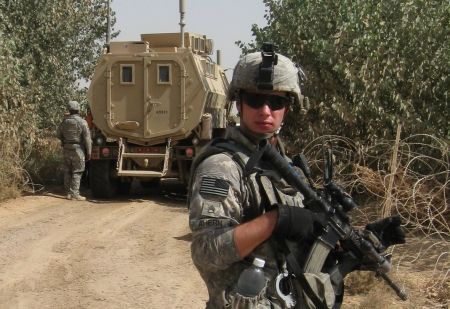 Ryan Ahern, a soldier with the U.S. Army, on patrol in Iraq. |
A little background on the claims process is necessary. The goal of the adjudicatory system is to determine whether a current medical condition is the result of the claimant’s military service and if so, the appropriate compensation for the resulting “impairment in earning capacity.”5 After a veteran files a “substantially complete” application for benefits, the VA has a duty to assist the claimant in obtaining evidence, such as service personnel files, service medical records, and private medical records.7
In the typical case, a claim for VA benefits is initially decided by a rating specialist, or rater, at one of the 58 VA regional offices. Raters determine if the claimant is eligible for benefits and has a disability that qualifies for compensation, assigning a disability rating--from 0 percent to 100 percent--that corresponds to a federal rating system. Raters must interpret and apply federal regulations, procedures in VA procedure manuals, other formal and informal management guidance, and precedential opinions issued by the agency’s general counsel.
The inefficient, paper-driven process and a tidal wave of new claims resulting from injuries suffered in Iraq and Afghanistan have generated a backlog of over 1million claims awaiting resolution.10 An initial decision on a claim currently takes an average of 179 days.
If a claimant disagrees with all or part of a rating decision, he or she may appeal by submitting a written Notice of Disagreement (NOD), which must be expressed in terms that can be reasonably construed as “a desire for appellate review” of the rater’s “specific determinations” and must be filed within one year of the rating decision.
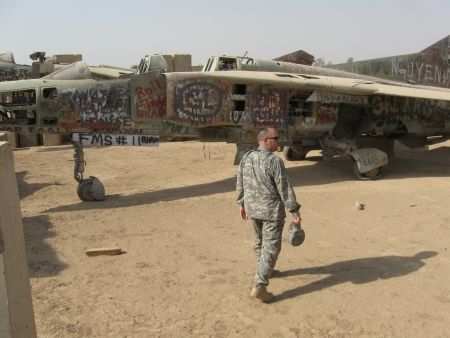 Oregon Guard Lt. Col. Todd Farmer looks at abandoned Soviet made jet |
The VA must offer the claimant the option of a de novo review by a decision review officer. If the claimant does not request a review, or if the review does not produce an acceptable result, the regional office must prepare a Statement of the Case (SOC) to provide a further explanation for the denial of the claim.
To complete an appeal, a claimant must file a properly completed VA Form 9 within 60 days of the SOC date. It now takes an average of 609 days from receipt of the form for the regional office to “certify the appeal” and forward the claims file to the Board of Veterans’ Appeals (BVA), and 886 days from appeal to board disposition.
The BVA is independent of the regional offices and has jurisdiction to perform a de novo review of all factual and legal issues in a rating decision. A BVA decision is the VA’s final agency action regarding a claim and must identify and discuss the “reasons and bases” explaining each substantive conclusion in the decision, but it has no res judicata effect.14 The mailing of the decision is the trigger for a 120-day period to seek review by the Court of Appeals for Veterans Claims (Veterans Court).
Once in the Veterans Court, appellants--usually initially pro se--are opposed by the agency in an adversarial appellate action.15 A single judge is initially assigned to each case, but if one or more issues are deemed significant enough to warrant a precedential opinion, a three-judge panel decides the case.
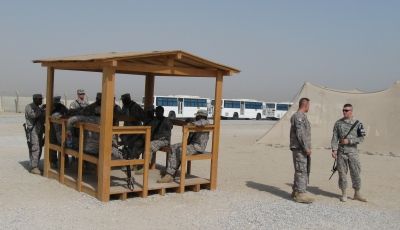 U.S. forces in Kuwait, on their way to Iraq, in 130+ temps. |
The Veterans Court’s review is based on the record of proceedings before the BVA.16 The Veterans Court is empowered to decide all relevant questions of law; interpret statutory and regulatory provisions; and hold unlawful and set-aside decisions, findings, and conclusions adopted by the secretary or the BVA not in accordance with law or without observance of procedure required by law.17 It is also authorized to affirm, modify, or reverse the BVA, or to remand the matter as appropriate.
Outright reversals of the BVA are rare. Under current policy, once the Veterans Court concludes that a BVA decision contains an error, it generally refrains from addressing any other alleged errors of law. Thus, unless the case contains only a single assertion of error, the court usually remands the case for “further development” with key legal issues unresolved.
The cycle of repeated adjudication, development, and re-adjudication resulting from this policy has been referred to as the “hamster wheel.”19 But the appeals process is important because, since 2001, veterans have prevailed in whole or in part in nearly 80 percent of the cases decided by the Veterans Court on the merits.
Thus, if a claimant lives long enough, it is quite likely that he or she will prevail on at least some part of an initially denied claim. That is why the right to substitute a claimant for a one who dies while stuck on the hamster wheel is so important.
Right of Substitution
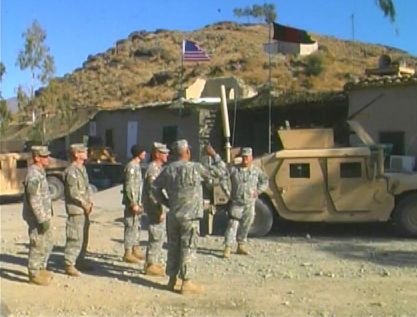 American soldiers at Camp Joyce in Afghanistan's Pesh Valley. |
In 2008, Congress passed a statute that explicitly created the right of certain family members to take the place of a claimant who dies awaiting a decision on a VA benefits claim. The law limits the pool of possible survivors eligible for substitution to spouses, children, and financially dependent parents of a veteran who died on or after October 10, 2008.
The VA’s proposed rules to comply with the act define a “pending claim” as one that has been filed at a regional office but has not yet been adjudicated, which means no rating decision has been issued.
A “pending appeal” is created by the filing of a NOD in response to a denied claim. In either situation, if the claimant dies, an eligible survivor has one year from the date of the death to request substitution. Curiously, the VA’s regulations do not require the agency to notify potentially eligible survivors--the onus is squarely on a survivor to request substitution.
An eligible survivor must request substitution in writing from the same regional office where the original claim or appeal is pending and must include the term “substitute” or “substitution,” the deceased claimant’s name, his or her claim number, and evidence supporting eligibility. The survivor can also request substitution by completing and submitting VA Form 21-0847.
If sufficient evidence is not provided or located in the existing file, the applicant may be asked to provide additional evidence. The VA will mail its response to the substitution request, but it has no deadline, so survivors cannot know how long a regional office will take to process and respond to a substitution request.
If a claimant dies after a NOD has been filed, a substitution request will put the claim or appeal on hold until the request has been processed. If no substitution request is forthcoming within a year from the claimant’s death, the regional office will close the case.
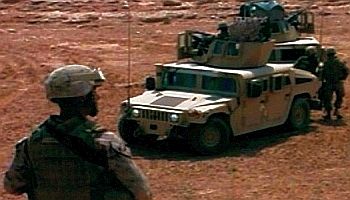 Marines on patrol in the Anbar province in Iraq. |
When an appeal is already before the BVA when the veteran dies, the VA’s proposed rules require the BVA to dismiss a pending appeal “without prejudice” when it receives notice of the death and return the entire claim to the regional office to await a substitution request. Again, if no substitution request is forthcoming within a year after the claimant’s death, the case is closed. If a request is received and approved, the case is returned to the BVA for resolution of the underlying claim.
It seems incongruous that the VA proposes to again require that a deceased claimant’s appeal be dismissed and the file returned to the regional office as a matter of course. Indeed, it is clear that Congress intended to eliminate such sources of inefficiency and delay by authorizing substitution. To that end, the VA could have empowered the BVA to consider the request de novo, grant it when the evidence satisfies the VA’s requirements, and proceed with reviewing the merits of the appeal.22 Instead, the VA has mandated the most inefficient option for implementing substitution.
Nevertheless, the BVA dismissal provides an opportunity for notification to the deceased veteran’s family regarding the potential for substitution. Although the form of the notice that will be required by the rules is not yet known, it is hoped that it will include a reasonable explanation of the right to substitute. Further, if substitution is granted, the case is supposed to be returned to the BVA and placed back on its docket in its original place in line. This is important, because thousands of appeals could have been docketed during the time the regional office processed the substitution request.
Zones of No Substitution
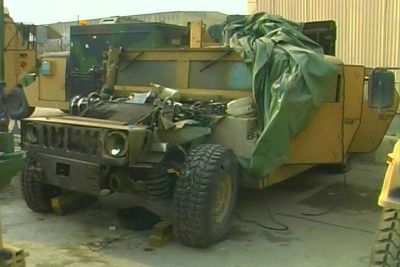 HUMVEE towed back to Camp Phoenix in Kabul after being |
Congressional intent notwithstanding, the VA’s proposed substitution rules create two “zones of no substitution.” The first zone is the time between a denied claim and submittal of a NOD, and the second is the time between an adverse BVA decision and the filing of a notice of appeal with the Veterans Court. During these periods, the VA’s current view is that “substitution is not available because a person may not substitute for the purpose of initiating a claim or an appeal.”
In other words, if a claimant has not filed a NOD or notice of appeal before he or she dies, the VA will not grant substitution, and the claim still “dies with the vet.”
Long before the VA published its proposed rules, however, the Veterans Court took a much more expansive view of Congress’s intent in creating a substitution right. The Veterans Court was unequivocal in Breedlove v. Shinseki that there should be no “zone of no substitution” where “a veteran had died after issuance of the Board decision but before the time for filing a reply brief” in that court.
That is, although Congress only explicitly addressed substitution during the VA’s administrative portion of a claim and appeal, the Veterans Court extended substitution to cases outside the VA administrative process. On close reading, however, the Veterans Court’s description of the substitution period conflicts with its cited need for a filed notice of appeal before it will consider a substitution request.
This is sure to be the focus of future litigation.
Despite Congress’s desire to ensure that a veteran’s closest family members can step in and obtain the benefits that the veteran had earned but lost because of VA delay, the substitution process as currently proposed still contains pitfalls for the unwary. Therefore, it is important for attorneys and other advocates counseling veterans and their family members to know of the right of substitution and to persevere in exercising that right. The ultimate reward--the veteran’s hard-earned benefits--is certainly worth it.
The inefficient, paper-driven process and a tidal wave of new claims resulting from injuries suffered in Iraq and Afghanistan have generated a backlog of over 1 million claims awaiting resolution.
Despite Congress’s desire to ensure that a veteran’s closest family members can step in and obtain the benefits that the veteran had earned but lost because of VA delay, the substitution process still contains pitfalls for the unwary.
The VA’s regulations do not require the agency to notify potentially eligible survivors--the onus is squarely on a survivor to request substitution.
Articles for November 29, 2011 | Articles for November 30, 2011 | Articles for December 1, 2011

googlec507860f6901db00.html
Salem-News.com:



Terms of Service | Privacy Policy
All comments and messages are approved by people and self promotional links or unacceptable comments are denied.
[Return to Top]
©2025 Salem-News.com. All opinions expressed in this article are those of the author and do not necessarily reflect those of Salem-News.com.